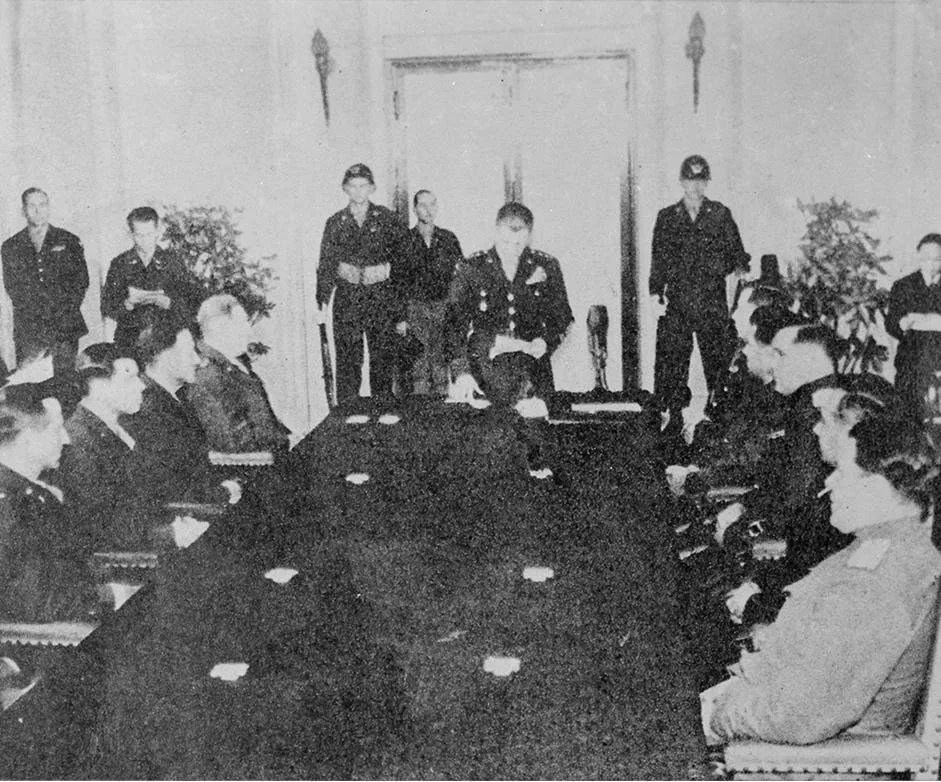By Porfessor Weathersby

As we saw in the last post, September 1947 was a turning point for American thinking about Korea. Because of increasing demands for US military and economic resources in other parts of the world, the military leadership came to the conclusion that the United States could no longer afford to maintain its occupation forces in Korea. However, President Truman, wanted to avoid hasty action that might prove harmful. He therefore decided to wait until the United Nations responded to Washington’s new proposal that the UN hold elections in Korea for a legislative body that would create a provisional government.
During this waiting period, the commander of American occupation forces in Korea, General Hodge, became a decisive advocate for continued US commitment. At the end of September, the new secretary of the army, Kenneth Royall, visited southern Korea on a fact-finding mission. Hodge explained to his chief that while he agreed that Korea had little strategic importance, he believed that American prestige would be seriously weakened if the Soviet Union took over southern Korea. He therefore recommended that troops be withdrawn only gradually, over a nine-month period, while American officers trained and equipped a strong army in the South.
Hodge also understood from his two years in Korea that postwar economic distress weakened the chances that southern Korea could withstand Soviet aggression. He therefore argued forcefully that the US should begin a five-year program of economic rehabilitation, following the same rationale as the Marshall Plan for Europe. Hodge’s arguments persuaded the War Department not to abandon Korea, but instead to press Congress for a billion-dollar aid plan. That way, the US could gradually withdraw from the peninsula without causing a political catastrophe.
Naturally, the possibility of a new American commitment to Korea alarmed the Soviets. At the Joint Commission, General Shtykov proposed that both occupying forces withdraw simultaneously, leaving Koreans to create a provisional government on their own. The American representative, Albert Brown, replied that since the Korean issue was now before the United Nations, the US could not take action before the UN reached a decision.
Even though the military leadership had decided in favor of Hodge’s proposals, high officials in the State Department still favored an early departure from Korea. At a meeting of the president’s cabinet on September 29 Secretary of State Marshall noted that the Soviet proposal for mutual withdrawal provided an opportunity for “getting out of Korea.” After this meeting, however, the State Department came around to the War Department’s view. Marshall now advised President Truman that the administration could not “scuttle and run” in Korea without damaging American prestige, even though it would take considerable money and effort to create a viable government in the South.
The Soviets, for their part, continued to blame the United States for the impasse in Korea. On October 10 Foreign Minister Molotov wrote to Secretary Marshall charging that US refusal to respond to the Soviet proposal for mutual withdrawal was delaying Korean independence. He also restated the old accusation that US insistence on consultation with “reactionary” parties had prevented the Joint Commission from carrying out the trusteeship. Moreover, Molotov stated that the Soviet government opposed United Nations consideration of the Korean issue. Undersecretary of State Lovett replied a week later that UN action on Korea was the only alternative because Soviet-American negotiations had reached a stalemate.
In the next post we will examine how the struggle over Korea evolved after the venue moved from the Joint Commission to the United Nations, shaping the environment that led to separate elections in the South.
[Sources: This post relies on James I. Matray, The Reluctant Crusade: American Foreign Policy in Korea, 1941-1950 (University of Hawaii Press, 1985).]
Sponsored ( Powered by dclick )
어떻게 스팀파워를 쓰면 좋을까요? 개인적생각 정리
스팀파워를 어떻게 쓰면 좋을지에 대한 개인적을 정리했습니다. 먼져 셀프보팅하면 욕을 먹는다. ...